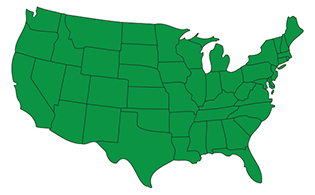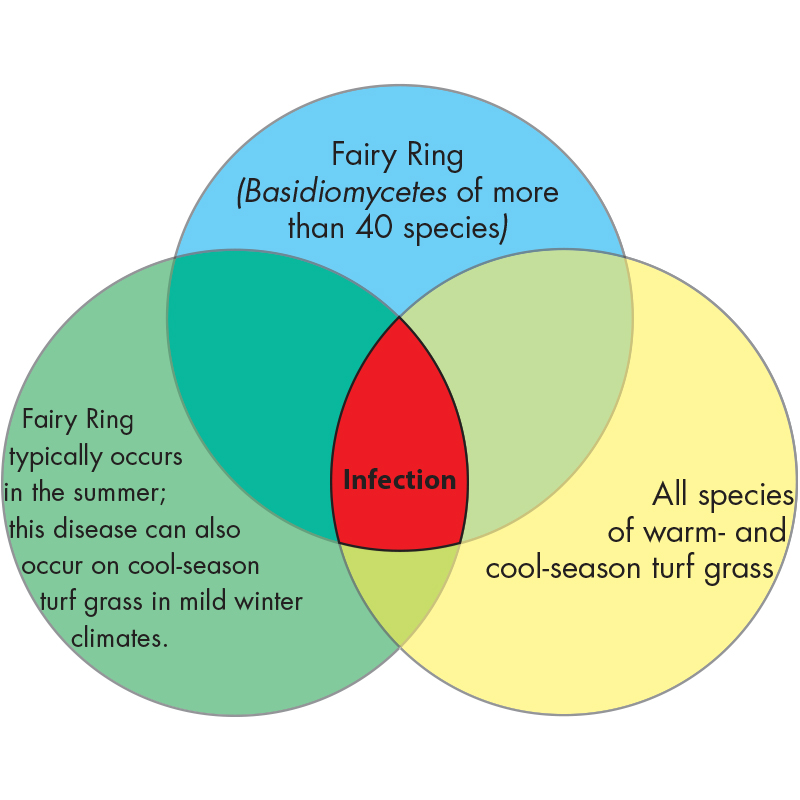
Fairy Ring
Basidiomycete fungi
Fairy Ring is actually a family of lawn diseases that are caused by more than 40 species of Basidiomycete lawn fungi. Fairy Ring is very common and affects all types of grass found in the United States, with damage occurring from early spring through early winter.
Identify

Root
Signs of Fairy Ring vary depending on which type of lawn fungus caused the infection. Raised dark green or brown rings of grass are the most typical symptoms of this lawn disease. The lawn fungi at the center of the attack will determine the shape and size of these rings, along with additional symptoms including fruiting bodies (e.g., mushrooms), hydrophobic areas and puff balls. Some fungi can produce fruiting bodies without the raised rings and vice versa. Fungicides for Fairy Ring are not very effective.
Life Cycle
A Fairy Ring infection can occur only if all of the following conditions are present: 1. Pathogen: Any species of Basidiomycete lawn fungi 2. Host: All warm- and cool-season grass types 3. Environment: This lawn disease can occur in many different climates and soil conditions

Control
Because you can't change your environment, the best way to control Fairy Ring is to create conditions that will foster a healthy lawn. Not only will this make your yard unfavorable for Fairy Ring growth, but it will also lower your risk of extensive damage should the lawn disease develop—plus you'll have the type of lawn you'll want to live on. For Fairy Ring control and lawn fungus treatment, TruGreen® recommends the following cultural control tips: • Reduce thatch by using a vertical lawn mower or through core aeration • Water deeply one to three times a week rather than lightly every day • Nitrogen applications can mask symptoms on some Basidiomycetes
Diagram








